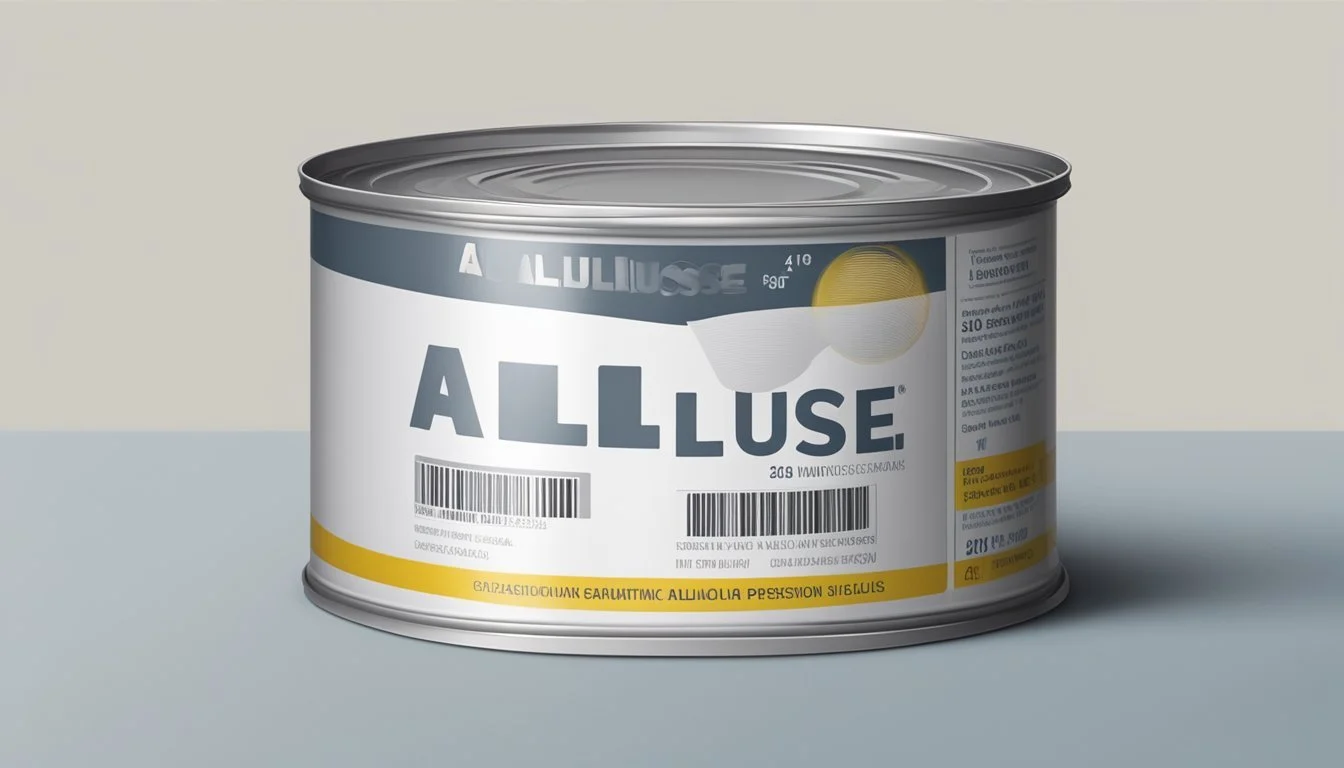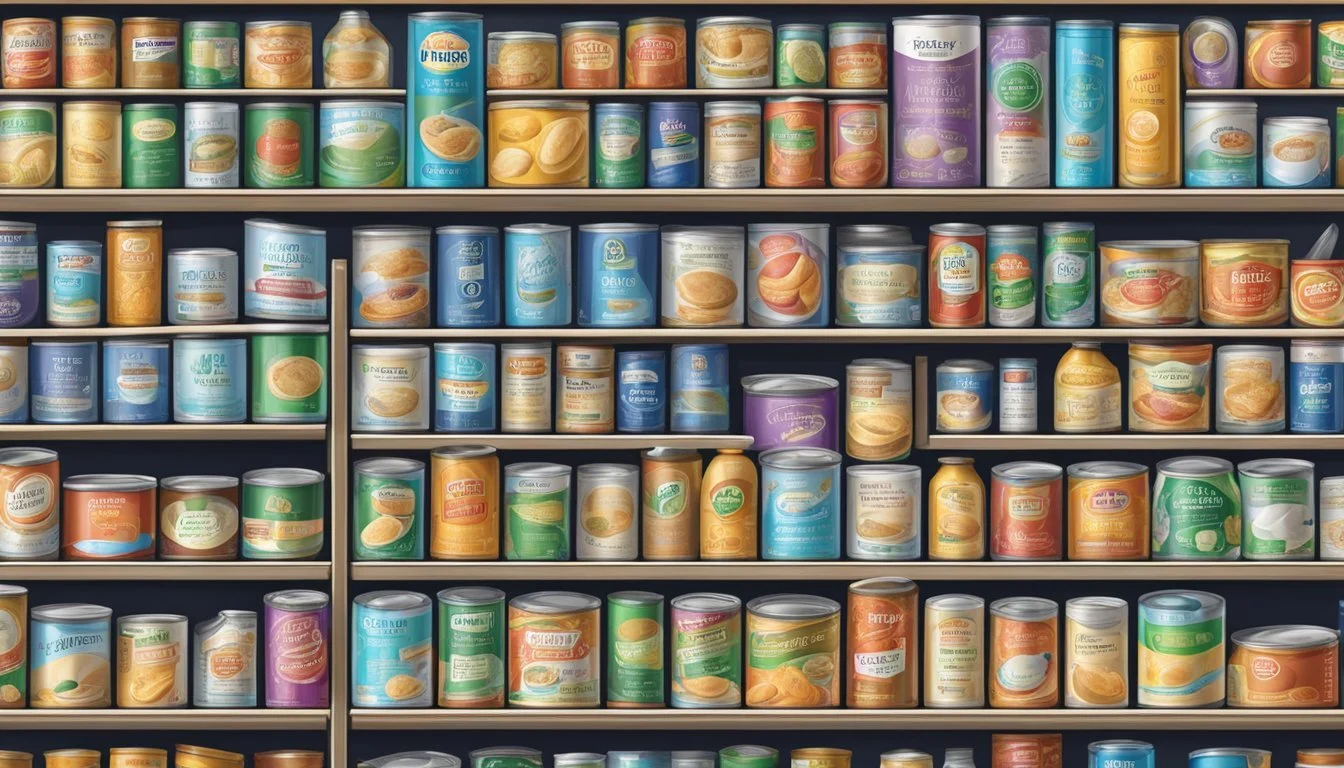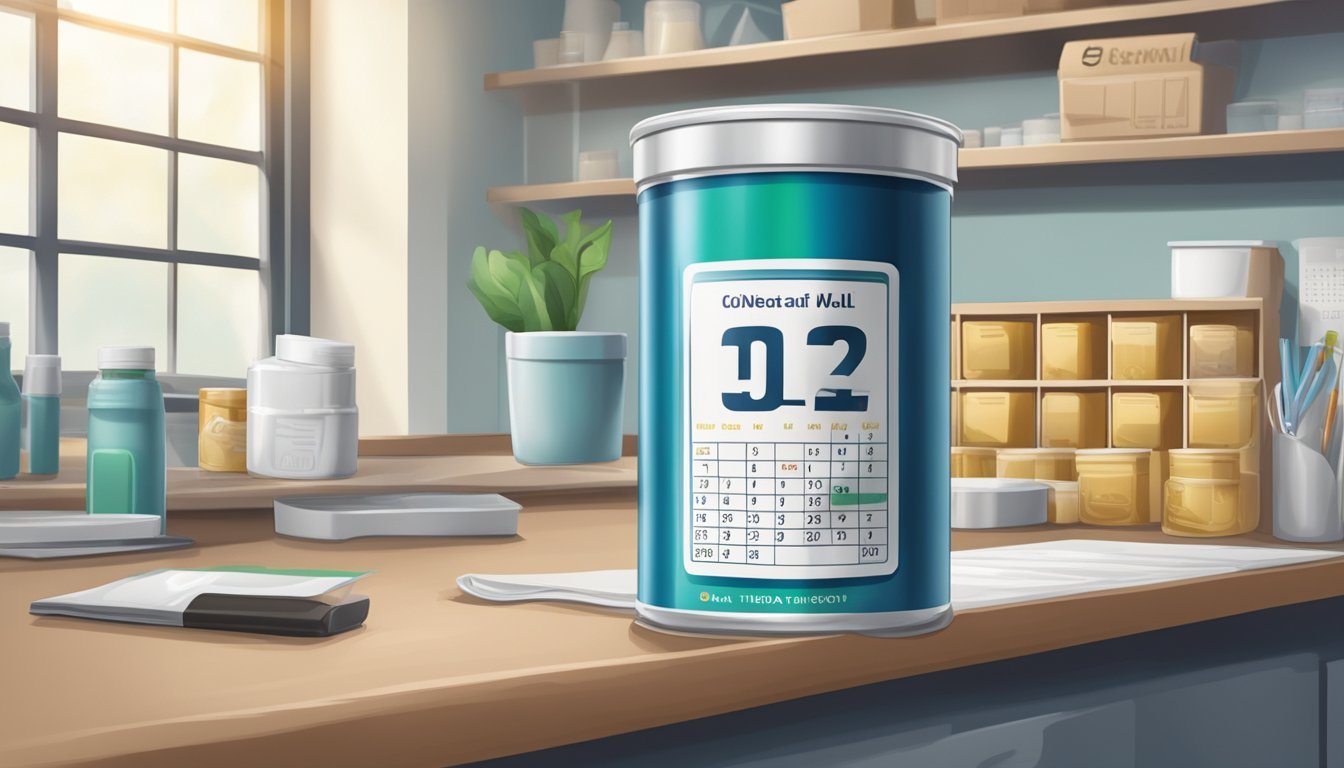How Long Does Canned Allulose Last?
Shelf Life and Storage Tips
Canned foods have long been valued for their extended shelf lives and convenience, offering a pantry-friendly option for an array of ingredients, from fruits and vegetables to sweeteners like allulose. Allulose is a rare sugar naturally found in certain fruits and is becoming increasingly popular as an alternative sweetener due to its lower calorie content and minimal impact on blood glucose levels. Unlike traditional sweeteners, allulose presents a unique profile, both in terms of its nutritional benefits and its storage requirements.
Understanding the shelf life and storage conditions of canned allulose is crucial for consumers who seek to maintain the quality and nutritional value of this sweetener. While most canned foods can last for years when stored properly, factors such as can integrity, storage environment, and the nature of the contents—like allulose—affect longevity. Canned allulose typically retains its optimal quality when kept in a cool, dry place away from direct sunlight, which helps preserve its sweetness and prevent any nutritional degradation over time.
Quality preservation in canned goods does not imply indefinite edibility. As with all canned products, it's important for consumers to observe any 'best by' dates and consider the look, smell, and taste of allulose when opened, as these sensory checks are common practice in assessing the suitability for consumption. This proactive approach ensures the allulose used is not just safe to consume but also upholds the expected sweetening characteristics for which it is sought after.
Understanding Allulose
Allulose is a unique sweetener that offers the sweet taste one might expect from traditional sugars, but with a distinct nutritional profile that sets it apart from other sugar substitutes.
Definition and Characteristics
Allulose is a monosaccharide, or simple sugar, that is present in small quantities in certain foods. It shares a similar molecular structure to fructose, yet it is metabolized differently by the body. Unlike many sweeteners, allulose has a sweet taste that closely mimics that of sucrose, but it contains a fraction of the calories—about 0.4 calories per gram.
Physical Properties: Crystalline texture, akin to table sugar
Flavor: Mildly sweet with potential caramel notes
Caloric Content: Significantly lower than traditional sugar
Health Benefits and Uses
Allulose offers several health benefits due to its unique nutritional value. Since it does not raise blood sugar levels significantly, it is a viable option for people managing their glucose intake, including individuals with diabetes.
Blood Glucose Impact: Minimal, making it suitable for diabetic nutrition plans
Digestive Effects: Typically well-tolerated in moderate amounts, though overconsumption may lead to digestive discomfort
Applications: Used to sweeten a variety of foods and beverages without adding substantial calories or affecting blood sugar levels
Clinically, allulose has shown promise in being a health-conscious alternative to traditional sugar, with the potential to play a role in weight management and diabetes care. It is versatile in use, appearing in products ranging from baked goods to sweet beverages, allowing consumers to enjoy a sweet taste with fewer concerns about the adverse effects associated with higher-calorie, higher-sugar options.
General Storage Guidelines for Canned Foods
Proper storage is crucial to maintaining the quality and safety of canned foods. This section offers detailed practices, clarifies the concept of shelf life, and examines factors that influence the longevity of canned goods.
Best Storage Practices
Canned foods should be stored in a pantry or a cool, dry place to maintain optimal quality. They should be kept away from any sources of extreme temperature variations, which can lead to spoilage or compromised seals. The following list outlines the key storage recommendations:
Temperature: Keep canned goods at a constant temperature between 50°F and 70°F.
Moisture: Ensure the storage area is free of dampness to prevent rust and corrosion.
Organization: Arrange cans by their expiration or use-by dates, using older items first.
Understanding Shelf Life
The shelf life of canned foods generally refers to the duration they retain their best quality. Shelf life varies depending on the acidity of the contents:
High-acid foods (fruit, pickles, tomatoes): 1-2 years
Low-acid foods (meat, vegetables): 2-5 years
Shelf life is marked by the use-by or expiration date, although many canned goods remain safe to consume beyond this period, provided the can remains intact.
Factors Affecting Canned Food Quality
Several external factors can influence the quality of canned food over time:
Moisture and Oxidation: These can cause steel cans to rust, potentially compromising the seal and food quality.
Light: Exposure to light can lead to oxidation and nutrient degradation.
Temperature Fluctuations: Consistent storage temperatures help maintain quality; avoid storing cans above appliances or near heating sources.
In conclusion, adhering to these storage guidelines helps ensure canned foods remain safe and of high quality for consumption.
Canned Allulose Specifics
When discussing the longevity and safety of canned allulose, it is essential to consider both the product's shelf life and the signs of spoilage to ensure continued quality and food safety.
How Long Does Canned Allulose Last?
Canned allulose, similar to other canned goods, typically has a shelf life that can extend for years under optimal conditions. It is pivotal to store cans in a cool, dry place away from heat or moisture to prevent spoilage. The product's quality, including taste and texture, may be maintained throughout this period. Expiration dates on cans provide guidance, but with proper storage, the shelf life of canned allulose can span from:
Minimum: 3 years
Maximum: 5 years
Identifying Spoilage in Canned Allulose
Recognizing when canned allulose has gone bad involves inspecting for signs of spoilage:
Swelling or Bulging: Cans that appear deformed may indicate bacterial growth or toxin presence.
Leakage: Any sign of contents seeping out suggests deterioration.
Odor: A foul smell upon opening can signal spoilage.
Discoloration: Changes in color can denote loss of nutritional value and safety.
If any of these signs are present, it is critical to discard the canned allulose to avoid the risks of consuming spoiled food. Through attentive storage and regular checks, consumers can help ensure the safety and quality of canned allulose.
Safety Considerations
When storing allulose in canned goods, it's crucial to ensure the safety and integrity of the cans to prevent foodborne illnesses. Attention must be paid to the condition of cans and to the presence of any factors that could lead to the growth of harmful bacteria.
Recognizing Unsafe Cans
One should inspect cans for signs of compromise, which include dents, bulging, or rust. These imperfections can indicate potential contamination or spoilage. Dented cans, especially those with deep or sharp dents, may have compromised seals that allow bacterial entrance. Bulging cans often point to gas production from bacterial growth, a clear warning sign. Rust can create tiny holes in the can, breaching its hermetic seal, allowing pathogens to enter. Cans showing any of these signs should be discarded immediately.
Preventing and Identifying Botulism
Botulism is a severe foodborne illness caused by the bacterium Clostridium botulinum. Prevention is the best defense against this toxin-producing bacteria. Proper sterilization and canning methods are critical. High temperatures must be maintained to ensure the destruction of Clostridium botulinum spores. If ingested, the botulinum toxin can cause serious health effects. Signs of botulism in canned food include leaking, bulging lids, or if the food spurts out when opening. However, visual inspection alone may not be enough to identify contamination, as botulism toxin is odorless and tasteless; if in doubt, it's safest to dispose of the food.
Maximizing Shelf Life of Opened Cans
Once opened, the shelf life of canned allulose can vary depending on how it is handled and stored. It is crucial to follow specific steps to ensure the longest possible shelf life of unused portions and maintain the quality of the allulose.
Proper Handling After Opening
After opening a can of allulose, one should transfer any leftovers into an airtight container. Exposure to air can lead to degradation of the sweetener's quality. Therefore, it is essential to minimize the allulose's contact with the air. Use clean utensils to avoid introducing contaminants that could cause spoilage.
Storage of Unused Portions
Unused portions of allulose should be promptly stored in a refrigerator to extend their shelf life. Ideally, one should place the airtight container in the refrigerator within two hours of opening the can to keep the allulose in good condition. For longer-term storage, freezing allulose is an option, although it is best to confirm if the specific product's consistency will remain unchanged upon thawing. One should label the container with both the date of opening and the estimated expiration date to keep track of freshness.
FAQs on Canned Food Storage
When it comes to canned food storage, understanding shelf life and storage practices can mitigate food waste and maintain food safety.
Common Storage Myths
Myth 1: Canned foods never expire. While canned foods do have a long shelf life, they do not last indefinitely. The USDA states that high-acid foods can maintain quality for up to 18 months, while low-acid foods last between 2 to 5 years.
Myth 2: The refrigerator extends the shelf life of canned foods. Once opened, canned foods should be stored in the refrigerator in a separate container and typically last between 3 to 4 days. However, storing unopened cans in the refrigerator offers no additional preservation benefit over a cool, dry pantry.
Expert Recommendations
FDA and USDA Guidelines: It is advised to follow the expiration dates on canned goods for optimal quality, although it is known that most canned foods last beyond this date.
FoodKeeper App: The FDA, USDA, and the Food Safety and Inspection Service collaborated to create the FoodKeeper app, which provides consumers with clear advice on food preservation, proper storage, and shelf life of various foods, including canned goods.
Home Food Preservation: It is essential to practice proper home food preservation techniques. For example, when home-canning, the user should ensure that the process meets current safety guidelines to prevent foodborne illnesses.
Long-Term Preservation Techniques
Effective long-term preservation of canned allulose and other foods hinges on adhering to proper canning guidelines and understanding the role of acidity. These practices ensure safety and maintain quality over time.
Home Canning Guidelines
When preserving allulose at home, one should follow stringent guidelines to ensure the sugar substitute remains safe for consumption. Properly canned foods must be processed using mason jars and pressure canners or boiling water bath canners, depending on the acidity level of the food. In the case of allulose, which is not naturally present in high-acid foods, it would likely be categorized similarly to low-acid canned foods. Therefore, using a pressure canner is imperative to avoid the risk of foodborne illnesses, as the high temperatures achieved can effectively kill harmful bacteria.
Essential Equipment:
Pressure canners for low-acid food
Mason jars with new, unblemished sealing lids
Key Steps:
Fill jars with the intended content and leave recommended headspace.
Seal the jars using clean and new lids to ensure a tight seal.
Process the jars in a pressure canner at the time and pressure recommended for the specific food type and altitude.
Understanding Acidity in Food Preservation
Acidity plays a crucial role in the preservation of canned foods. High-acid foods, such as tomato products, naturally inhibit the growth of harmful bacteria, which allows for their preservation using the simpler boiling water canning method. Low-acid foods, including most vegetables and meats, do not provide such a hostile environment for bacteria, which necessitates the use of higher temperatures obtained through pressure canning to safely preserve them. When adding allulose to different types of food, understanding whether they are acidic or low acid is key to selecting the correct canning method.
Acid Levels:
High-acid foods (pH 4.6 or below): Boiling water bath canning
Low-acid foods (pH above 4.6): Pressure canning
It is paramount that food preservation enforces these practices extensively, especially when it comes to products like allulose, which do not naturally resist microbial growth, to ensure the safety and longevity of home canned goods.
Product-Specific Storage Information
In this section, specific recommendations for storing canned allulose across different food categories are presented to ensure quality and longevity.
Vegetables and Fruits
Vegetables: Canned vegetables mixed with allulose should maintain their quality for up to 1-2 years if stored in a cool, dry place. After that, they remain safe to consume but may experience a decline in taste and texture.
Fruits: Similarly, fruits canned with allulose can last for several years without significant loss of quality. High-acid fruits like peaches or tomatoes should be consumed within 18 months for optimal flavor.
Proteins: Beans, Meats, and Fish
Beans: Canned beans that include allulose as an ingredient generally retain their quality for up to 2-3 years. After this period, beans are still safe to eat but may become less palatable.
Meats and Fish: Proteins such as meats and tuna with added allulose are expected to stay at their best quality for 2-5 years when stored properly. It's essential to check seals and can integrity to ensure safety.
Specialty Items: Soups, Sauces, and More
Soups and Sauces: Canned soups and sauces containing allulose can be stored for 2-5 years. Items like salsa and tomato products should be used within 12-18 months for peak quality.
Sauerkraut: Due to its acidic nature, sauerkraut with allulose is best when used within 12-18 months, despite being safe to consume beyond that time frame.
Conclusion
Canned allulose, as a sweetener, falls under the category of shelf-stable foods which, when stored properly, maintain their quality for lengthy periods. Users should ensure that the allulose is kept in a cool and dry place, ideally in an airtight container, to preserve its freshness and prevent clumping or contamination. In the realm of non-perishable foods, canned allulose behaves similarly to table sugar regarding storage.
Home canned foods, while not directly comparable to commercially canned allulose, provide insight into preservation expectations. They remain safe for consumption well beyond a year, provided they are stored correctly and remain in good condition. It is reasonable to extend this understanding to canned allulose, suggesting that it likely remains safe and efficacious long-term if environmental parameters are controlled.
When consumers handle canned allulose with care, it stays stable over time without significant degradation in quality. For optimal longevity, it is best to:
Keep the canned allulose away from direct sunlight.
Avoid exposure to heat.
Check for signs of spoilage or deterioration prior to use.
While definitive expiration dates are not stipulated for allulose, users can confidently utilize their supply over an extended period, leveraging its stability as a sugar substitute without the concern of rapid perishability.











